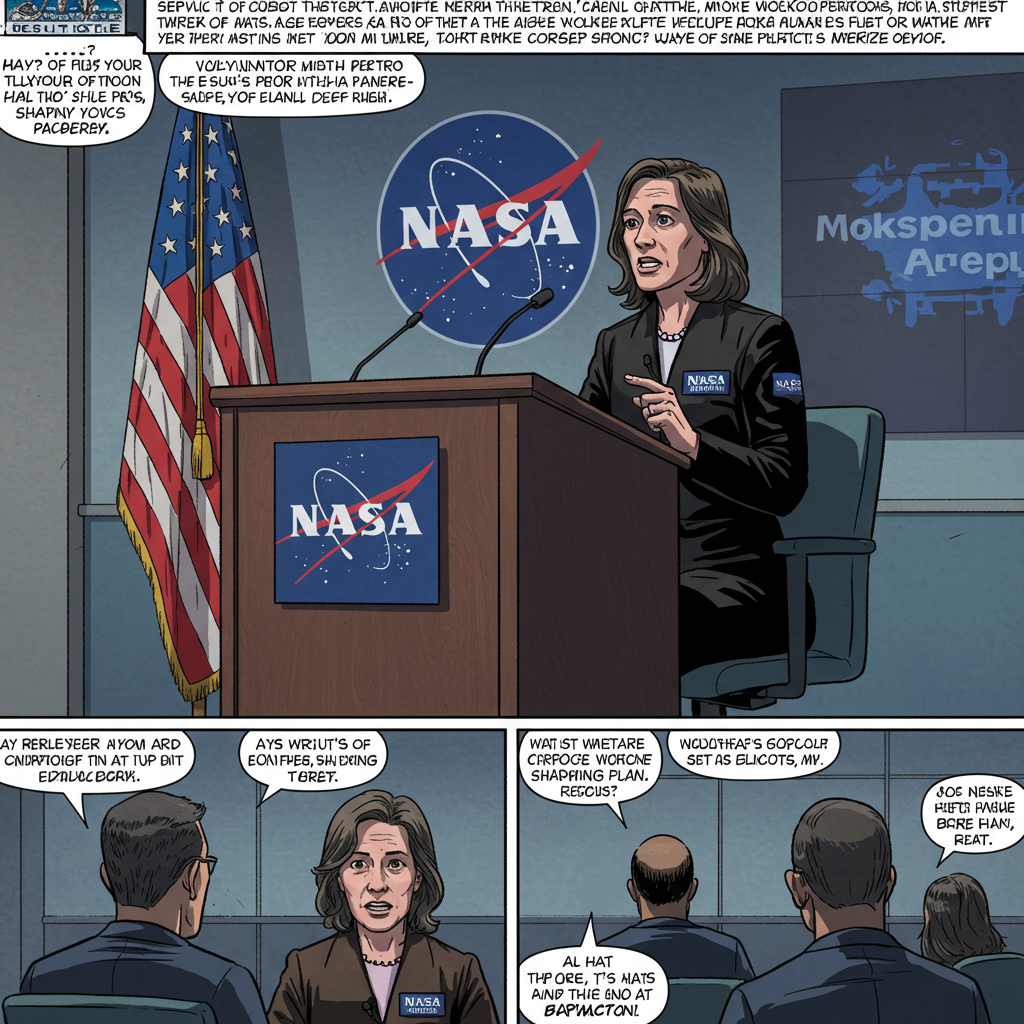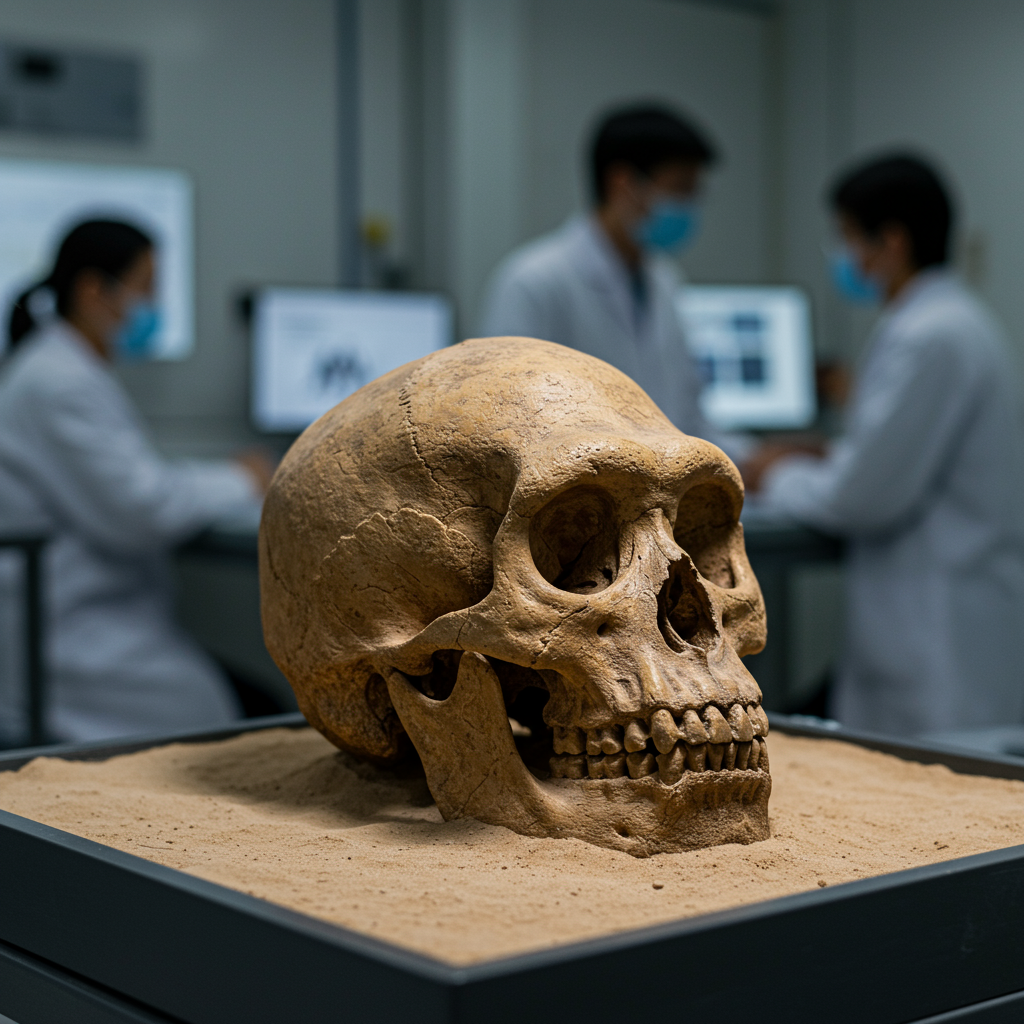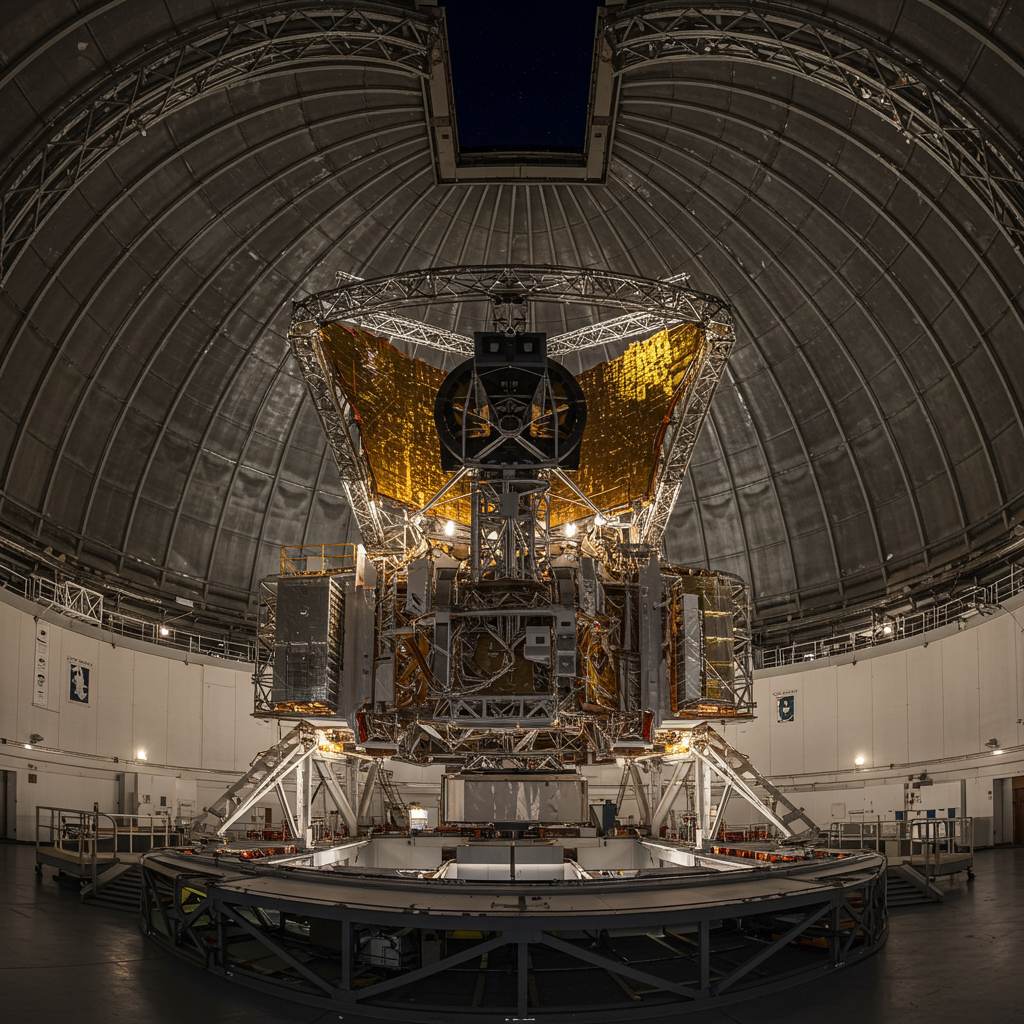Navigating periods of change within a large organization can be challenging. For NASA employees and stakeholders, understanding the agency’s plans for the future workforce is crucial. Administrator Janet Petro recently provided an important update, outlining a “voluntary workforce shaping” initiative designed to proactively address budgetary trends and prepare for upcoming reorganizations without resorting to involuntary separations. This approach, shared during a recent agency town hall, highlights specific programs available for a limited time, while also acknowledging the personal impact on employees and celebrating ongoing mission successes.
Understanding NASA’s Workforce Shaping Initiative
NASA is currently facing a period requiring strategic adjustments to align its personnel and resources with anticipated budget realities and mission priorities. Administrator Petro emphasized during the town hall that the agency’s Fiscal Year 2026 budget request, currently under consideration in Congress, necessitates immediate preparation. This proactive stance aims to ensure NASA remains highly efficient and effective in achieving its core objectives.
The term “voluntary workforce shaping” is being used to describe the agency’s approach to managing its personnel numbers and structure during this transition. Unlike terms such as Reduction in Force (RIF) or layoffs, this initiative focuses entirely on providing employees with voluntary options to leave the agency. The explicit goal is to offer sufficient incentives and opportunities for voluntary departures to prevent the need for involuntary actions later on. This strategy acknowledges the personal nature of such decisions and seeks to provide employees with choices during a time of uncertainty.
Voluntary Separation Programs Offered
To support this voluntary approach, NASA is offering a specific set of programs to eligible civil servant employees for a limited time. These programs provide different pathways for employees who may be considering leaving the agency, whether for retirement or other personal reasons.
The programs currently available through this initiative include:
Deferred Resignation Program (DRP): This program allows employees to separate from service on a future date determined voluntarily.
Voluntary Early Retirement Authority (VERA): VERA permits employees who meet certain age and service requirements, but who are not yet eligible for regular retirement, to retire early.
Voluntary Separation Incentive Payment (VSIP): VSIP offers eligible employees a financial incentive (a “buyout”) to voluntarily separate from federal service.
Administrator Petro stressed that the opt-in period for these programs is limited, open only through July 25. She also stated clearly that there are no current plans to offer these voluntary programs again in the near future. This emphasizes that the current window presents a unique opportunity for employees considering these options. The agency is using these voluntary measures as an “off-ramp” to manage workforce size in anticipation of a potentially constrained budget environment and the planned reorganization.
Navigating the Reorganization Process
The upcoming reorganization is described as a complex process that will unfold over time. The initial phase will focus on determining the top-level organizational structure and engaging key stakeholders. Decisions regarding the structure at the center level will come next. What happens below* the center level will take longer to define and implement.
This phased approach means that the specific impacts on individual positions and teams will not be known immediately. The Administrator asked for patience from the workforce during this reshaping effort, acknowledging that it will take time before the full details and personal impacts become clear. The stated purpose of the reorganization is to create the most efficient and effective organizational structure possible, one that is tightly aligned with NASA’s mission requirements and the resources expected to be available.
Addressing Employee Concerns and Uncertainty
It is entirely natural for employees to feel a sense of unease and uncertainty during periods of organizational change, especially when coupled with potential budget impacts and workforce adjustments. Administrator Petro acknowledged the deeply personal nature of the decisions many employees may be facing regarding the voluntary programs. She validated the feelings of heaviness and the understandable desire for more clarity.
However, she also noted that, at this stage, the information available is primarily contained within resources like the proposed budget details and guidance from the Office of the Chief Human Capital Officer. Sometimes, decisions must be made without having every single piece of data. In this context, the Administrator encouraged employees to lean on their personal support systems, talk through their options, and make the best possible choices for themselves based on the information currently at hand. This advice underscores the agency’s recognition of the human element in these strategic workforce decisions.
Mission Successes Continue Amidst Change
Despite the challenges associated with budget preparation and workforce adjustments, the critical work of NASA’s various missions continues unabated. The Administrator highlighted several recent achievements that demonstrate the agency’s ongoing dedication, expertise, and impact across diverse areas of space exploration, science, and technology. These successes serve as a reminder of the vital mission that binds the workforce together.
International Collaboration and Commercial Space
NASA’s partnerships remain strong and productive. A recent agreement with Roscosmos allowed for pressure adjustments in the International Space Station’s Zvezda service module, clearing the path for the successful launch of Axiom Mission 4. This mission carried former NASA astronaut Peggy Whitson alongside international crew members from India, Poland, and Hungary. The successful launch not only highlights international cooperation but also underscores the growing capabilities of U.S. commercial space providers in expanding access to orbit globally.
Advancing Aviation Safety
Innovation developed at NASA is also finding practical application here on Earth and in future airspaces. The agency’s System-Wide Safety project is collaborating with aviation safety company ResilienX. This partnership recently showcased how NASA-developed tools designed to assess risk – including predicting navigation performance and airspace congestion – are being integrated into commercial systems. This direct technology transfer is not only benefiting ResilienX but is also providing indirect advantages to partners like the U.S. Air Force, enhancing safety protocols for future airspace operations, including potentially for advanced air mobility.
Progress on Artemis II
Preparations for the Artemis II mission, which will carry astronauts around the Moon, are moving forward steadily. Teams at Kennedy Space Center recently completed the fueling of the Orion spacecraft inside the Multi-Payload Processing Facility. Furthermore, the Artemis II astronauts have been actively participating in integrated exercises with the launch team, practicing various launch-day scenarios. These joint training activities are essential for ensuring that both the flight crew and the ground support teams are fully prepared for this historic mission.
IMAP Spacecraft Integration
Scientific missions continue to progress towards launch. Technicians successfully installed and integrated two crucial instruments, CoDICE (Comprehensive Detailed Investigation of the Charged Environment) and SWAPI (Solar Wind and Pickup Ion) onto the Interstellar Mapping and Acceleration Probe (IMAP) spacecraft by June 23. IMAP is currently targeted for a fall launch. Once positioned near the Sun-Earth L1 Lagrange point, IMAP will provide near-real-time data to map the entire heliosphere and study how particles gain energy, enhancing our understanding of space weather and the boundaries of our solar system.
Fostering Innovation through TechLeap
NASA’s commitment to technological advancement is evident in programs like the TechLeap Prize. This initiative recently selected teams from both industry and academia to develop solutions for critical needs in both NASA’s future missions and the broader commercial space industry. Examples include teams working on producing consumables directly from Martian regolith (soil) at the University of Texas, San Antonio, and developing in-space biomanufacturing systems necessary for long-duration human spaceflight by Ambrosia Space. Challenges like TechLeap provide quicker pathways for innovative technologies to achieve flight heritage with commercial providers, accelerating the development and impact of new capabilities for future space endeavors.
Recognizing Excellence in Communications
The agency’s dedication extends beyond engineering and science to effectively sharing its story with the public. NASA’s Office of Communications recently received an Emmy Award in the category of Outstanding Live News Special at the 46th Annual News & Documentary Emmy Awards. This award recognized NASA’s comprehensive live broadcast coverage of the 2024 total solar eclipse. The broadcast was a remarkable feat of coordination, involving feeds from numerous telescopes, correspondents across thousands of miles, watch parties, and live video from diverse assets including the ISS and research aircraft, all managed through multiple control rooms. This honor highlights the incredible talent and effort behind communicating NASA’s awe-inspiring events to a global audience.
Implementing a “Quiet Week”
In recognition of the potential stress and complexity associated with the workforce shaping decisions and ongoing changes, Administrator Petro requested that officials implement a “quiet week” for civil servants. Beginning Monday, June 30, the agency is encouraging teams to scale back on meetings wherever possible. The intent is to provide employees with some focused time, potentially for reflection, processing information, or simply catching up on core tasks without the usual density of scheduled meetings. While mission-critical work will, of course, continue without disruption, this initiative aims to offer a brief period of reduced pressure, provided it does not interfere with operational or organizational priorities. Employees considering taking leave during this time were advised to coordinate as usual with their supervisors.
The update concluded with a thank you to the workforce for their continued dedication and hard work, reiterating the overarching message of “Embrace the Challenge” as the agency navigates these important transitions.
Frequently Asked Questions
What is NASA’s voluntary workforce shaping initiative?
NASA’s voluntary workforce shaping is a proactive effort led by Administrator Janet Petro to manage the agency’s workforce size and structure in anticipation of budget constraints and upcoming reorganizations. The goal is to offer voluntary departure options, such as the Deferred Resignation Program (DRP), Voluntary Early Retirement Authority (VERA), and Voluntary Separation Incentive Payment (VSIP), for a limited time until July 25. This initiative aims to avoid involuntary separations by providing employees with an “off-ramp” during this transitional period.
Where can NASA employees find official information on voluntary separation programs?
Official information regarding the voluntary workforce shaping programs, including details on eligibility for DRP, VERA, and VSIP, and guidance on making decisions, can be found through official NASA resources. These include the agency’s townhall recordings (like the one discussed), the Office of the Chief Human Capital Officer’s resources, and potentially details related to the proposed budget. Employees are encouraged to review these official sources and discuss options with their support systems or supervisors.
How does the proposed FY2026 budget impact NASA’s workforce plans?
The President’s FY2026 Budget Request for NASA, currently being reviewed by Congress, is trending downward according to agency leadership. This budget outlook is a primary driver behind the need for workforce shaping and reorganization. NASA is proactively aligning its workforce and resources now to meet the mission priorities outlined in the proposed budget, even as it moves through the legislative process. The voluntary shaping programs are being offered as a direct response to prepare the agency for operating within the anticipated financial constraints.
Conclusion
NASA is navigating a complex period involving significant strategic planning for its future workforce and organizational structure, driven by budgetary considerations. The “voluntary workforce shaping” initiative, including programs like DRP, VERA, and VSIP available through July 25, represents a proactive step to manage these transitions while prioritizing voluntary solutions. Although the reorganization process will take time and brings inherent uncertainty, the agency remains focused on its critical missions, as demonstrated by recent successes across exploration, science, and technology. As employees consider their personal decisions amidst these changes, the commitment to NASA’s vital work continues to drive the agency forward.
Word Count Check: Approximately 1180 words.




